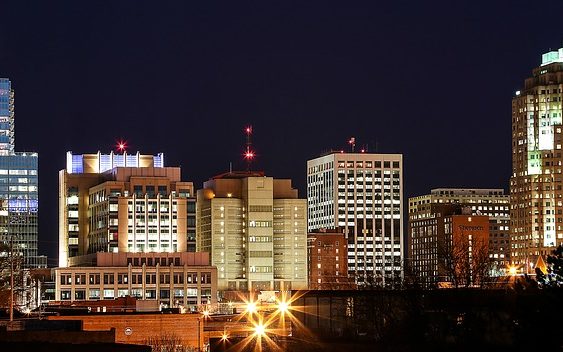- Cold front could trigger severe weather in Houston area this weekend | Timeline for potential storms
- Severe weather possible for Houston this weekend | Weather Impact Alert issued
- Impact Plastics not responsible for workers killed in Helene flooding, TOSHA says
- 'A little emotional': Hurricanes equipment manager got seconds in goal, memory to last a lifetime
- WMO retires three hurricane names after devastating 2024 season
Hurricane Beryl roars toward Mexico after leaving destruction in Jamaica and eastern Caribbean

PLAYA DEL CARMEN, Mexico (AP) — Hurricane Beryl ripped off roofs in Jamaica, jumbled fishing boats in Barbados and damaged or destroyed 95% of homes on a pair of islands in St. Vincent and the Grenadines before rumbling toward the Cayman Islands and taking aim at Mexico’s Caribbean coast after leaving at least seven dead in its wake.
What had been the earliest storm to develop into a Category 5 hurricane in the Atlantic, weakened to a Category 3 by early Thursday but remained a major hurricane. Its eye was forecast to pass just south of the Cayman Islands overnight.
“Weakening is forecast during the next day or two, though Beryl is forecast to remain a hurricane until it makes landfall on the Yucatan Peninsula,” the National Hurricane Center in Miami said in its 8 a.m. ET update.
Mexico’s popular Caribbean coast prepared shelters, evacuated some small outlying coastal communities and even moved sea turtle eggs off beaches threatened by storm surge, but in nightlife hotspots like Playa del Carmen and Tulum tourists still took one more night on the town.
Mexico’s Navy patrolled areas like Tulum telling tourists in Spanish and English to prepare for the storm’s arrival.
Early Thursday morning, the storm’s center was about 50 miles (80 kilometers) southwest of Grand Cayman island and 385 miles (620 kilometers) east-southeast of Tulum, Mexico. It had maximum sustained winds of 120 mph (195 kph) and was moving west-northwest at 20 mph (about 31 kph). Beryl was forecast to make landfall in a sparsely populated area of lagoons and mangroves south of Tulum in the early hours of Friday, probably as a Category 2 storm. Then it was expected to cross the Yucatan Peninsula and restrengthen over the warm Gulf of Mexico to make a second strike on Mexico’s northeast coast near the Texas border.
The storm had already shown its destructive potential across a long swath of the southeastern Caribbean.
Beryl’s eye wall brushed by Jamaica’s southern coast Wednesday afternoon knocking out power and ripping roofs off homes. Prime Minister Andrew Holness said Jamaica had not seen the “worst of what could possibly happen.”
“We can do as much as we can do, as humanly possible, and we leave the rest in the hands of God,” Holness said.
Several roadways in Jamaica’s interior settlements were impacted by fallen trees and utility poles, while some communities in the northern section were without electricity, according to the government’s Information Service.
The worst perhaps came earlier in Beryl’s trajectory when it smacked two small islands of the Lesser Antilles.
Michelle Forbes, the St. Vincent and Grenadines director of the National Emergency Management Organization, said that about 95% of homes in Mayreau and Union Island have been damaged by Hurricane Beryl.
Three people were reported killed in Grenada and Carriacou and another in St. Vincent and the Grenadines, officials said. Three other deaths were reported in northern Venezuela, where four people were missing, officials said.
One fatality in Grenada occurred after a tree fell on a house, Kerryne James, the environment minister, told The Associated Press.
St. Vincent and the Grenadines Prime Minister Ralph Gonsalves has promised to rebuild the archipelago.
In Cancun on Wednesday afternoon, Donna McNaughton, a 43-year-old cardiac physiologist from Scotland, was taking the approaching storm in stride.
Her flight home wasn’t leaving until Monday, so she planned to follow her hotel’s advice to wait it out.
“We’re not too scared of. It’ll die down,” she said. “And we’re used to wind and rain in Scotland anyway.”
___
Associated Press journalists John Myers Jr. and Renloy Trail in Kingston, Jamaica, Mark Stevenson and María Verza in Mexico City, Coral Murphy Marcos in San Juan, Puerto Rico and Lucanus Ollivierre in Kingstown, St. Vincent and Grenadines contributed to this report.